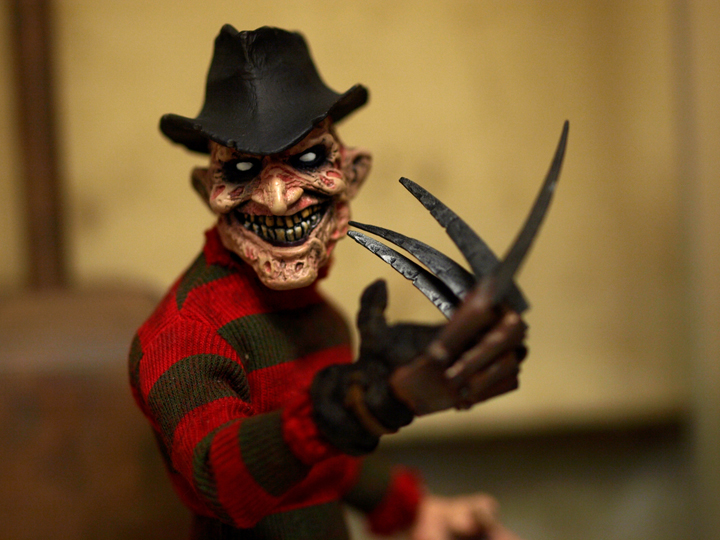It was 1 a.m., and my living room looked eerie and unfamiliar, lit only by the light from the television screen.
Everyone else in the house was asleep, and after what felt like hours of tossing and turning, I had bleakly ventured downstairs to see if the tube could cure my insomnia. What I found on AMC’s late-night, mid-October scheduling nearly six years ago didn’t so much soothe my nerves as amplify them.
From the very first frame, I was wholly captivated by the network’s showing of “Halloween,” a low-budget horror movie classic from 1978. The subtly ominous wide shots of what looked like calm suburban streets turned disturbing, and it was more than just superficially shocking to me as a first-year student in high school.
It’s a long-standing and time-honored tradition among most movie critics to dismiss or even ignore movies like “Halloween” — messy, unprocessed slashers — from the realm of artistically acceptable media consumption. Vincent Canby, film critic for the New York Times, likened watching the slasher classic “Maniac” to “watching someone else throw up.” But movies in this horror tradition do much more for the viewer than what most critics believe and should hardly be dismissed.
The way these movies can address fundamental anxieties and concerns is worthy at least of recognition, if not respect.
That late October night, it had only been a few months since I graduated from my parish’s grade school, which I had attended since I was 3 years old. Many of my classmates at my new school — the Catholic high school five blocks away from my house — were the same people I had known since kindergarten, and the rest were from the next neighborhood over.
My cultural and social experiences at the time were narrow, to put it shortly. The concept of violence had little meaning beyond the occasional recess scuffle and news stories from other neighborhoods that sometimes flashed across the T.V. screen.
“Halloween” begins right off the bat with an 8-year-old stabbing his sister to death in the heart of their tranquil suburban home on Halloween night. As the film continues, it offers no mercy to the numerous victims, regardless of race or community. The movie’s main plot follows the young boy — Michael Myers — who spent 15 years in a high-security asylum. He escapes and stalks a group of teenage friends in a nearby Illinois suburb on Halloween night. It’s a story that’s simple almost to the point of banality, but its stark plainness is among its greatest strengths.
A number of film critics, including Pat Gill, professor of communications at the University of Illinois, interpret “Halloween” as attempting to “mock white flight to gated communities” and parents’ attempts “to shield their children from the dangerous influences represented by the city.” In the context of the United States in the ‘70s, with overall crime and violent crime reaching then-historic highs — and even today — the interpretation makes sense.
But the movie’s theoretical interpretation mattered less to my 14-year-old self than the unsettling connections it made with something even more influential in my life than suburban culture: religion.
The antagonist targets his victims with a hyper-moral motivation. He murders his sister after he witnesses her intimate encounter with a boy in the living room, and the teenagers he tracks after his escape hotbox their cars, party like they’re 21 and can’t seem to keep it in their pants.
The masked killer uses terrifying, psychotic strategies to punish what he sees as immorality. The moral code he tries to enforce was chillingly familiar to me as I embarked on my 10th year of religious education that October. I had never experienced an alternative to my own worldview and I began to wonder why I was so attached to the idea of Christian morality.
Clearly, countless experiences between then and now have shaped my feelings toward and practice of religion. But what I saw as the movie’s shocking and confusing novelty forced me to look at the world and its people in a way that fundamentally differed from everything I had experienced before then.
For the first time, I had to empathize and identify with the characters who were sinning and to dislike the character who was enforcing what he thought were Christian values.
A good movie is one that grabs and keeps the viewer’s attention — a great movie does so while simultaneously forcing the audience to look at and think about something in their own lives from a different perspective. “Halloween,” as the quintessential slasher movie, isn’t the first to come to critics’ minds when thinking of great films of the past century. Yet, my experience with the low-budget thriller was meaningful.
To say horror movies like “Halloween” are my guilty pleasure would be inaccurate. Screw the critics, I don’t think anyone should feel guilty about taking enjoyment from a form or genre of art that matters to them.
Horror movies matter to the collective catharsis of social angst — and, they matter to me.
Henry primarily writes on government and domestic policy for The Pitt News.
Write Henry at [email protected].



